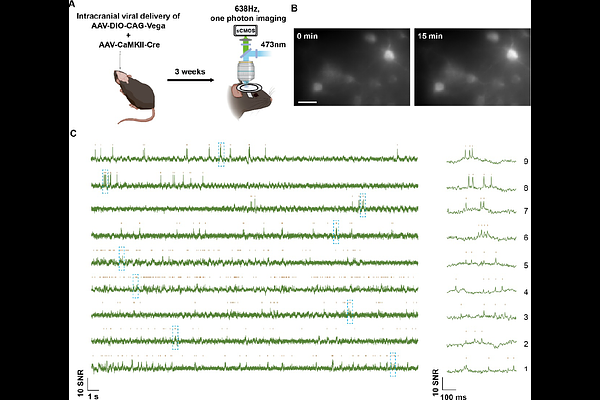A photostable genetically encoded voltage indicator for imaging neural activities in tissue and live animals

A photostable genetically encoded voltage indicator for imaging neural activities in tissue and live animals
Cao, C.; Zhu, R.; Zhou, S.; Zhao, Z.; Lin, C.; Liu, S.; Peng, L.; Subach, F. V.; Piatkevich, K. D.; Zou, P.
AbstractGenetically encoded voltage indicators (GEVIs) enable noninvasive, high-speed monitoring of electrical activity but are constrained by limited brightness and rapid photobleaching under continuous illumination. Here, we present Vega, a highly photostable green fluorescence GEVI with both high sensitivity ({Delta}F/F=-33% per 100mV) and fast response (1.34ms). Under one-photon excitation at 1 W/cm2, Vega exhibits more than 20-fold slower photobleaching than the spectrally similar GEVI, Ace-mNeon2. In acute mouse brain slice, Vega enabled wide-field high-fidelity recording of action potentials from 51 neurons simultaneously. In pancreatic islets, it revealed heterogeneous {beta}-cell activation and intercellular coupling in response to glucose elevation. Finally, one-photon imaging in awake mice demonstrated stable cortical voltage mapping in vivo. Vega thus overcomes the longstanding photostability-performance trade-off, enabling chronic, high-fidelity voltage imaging across preparations.